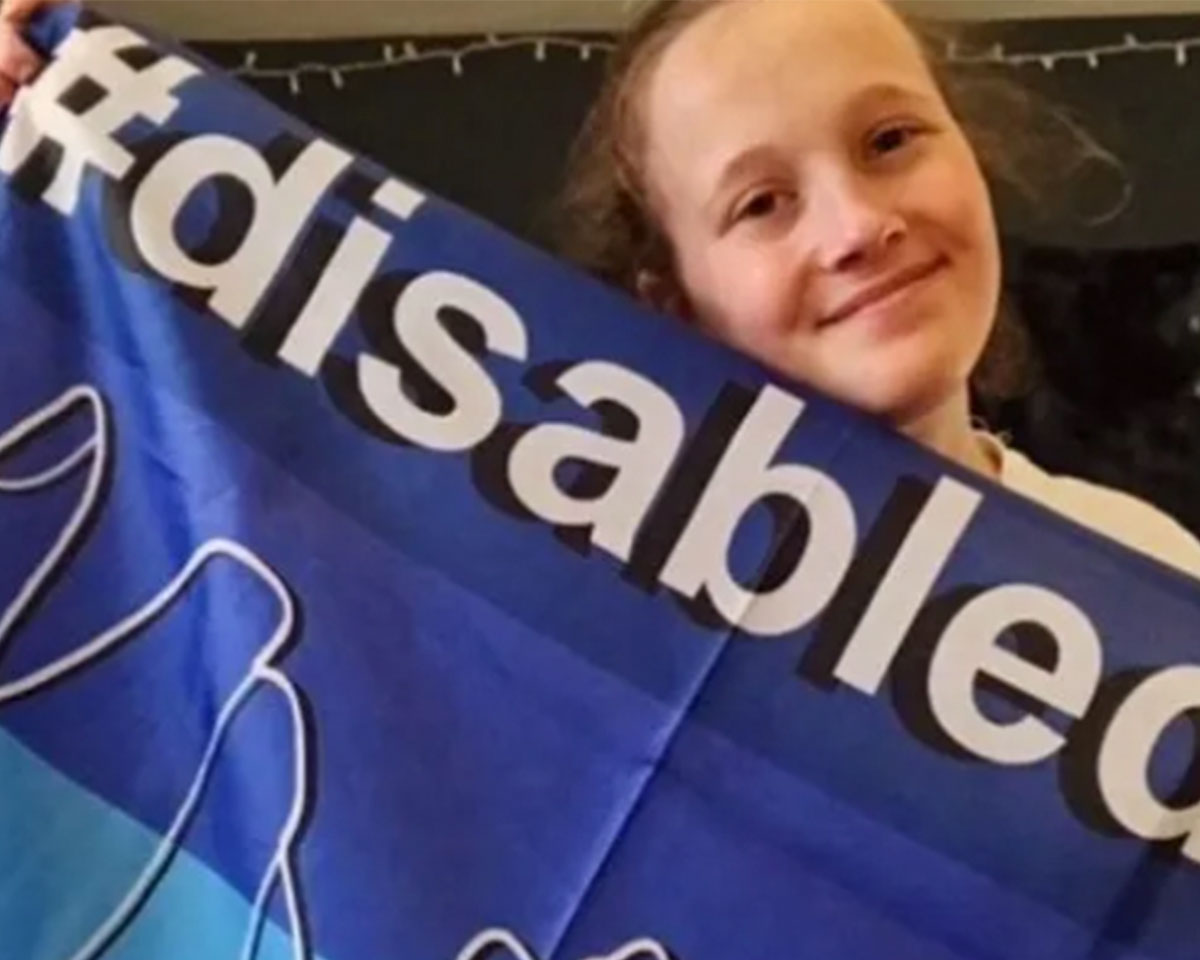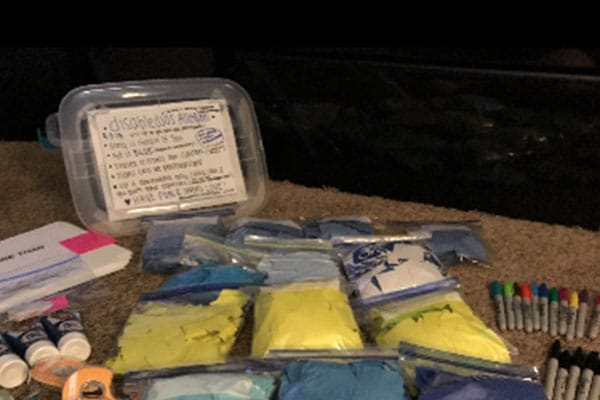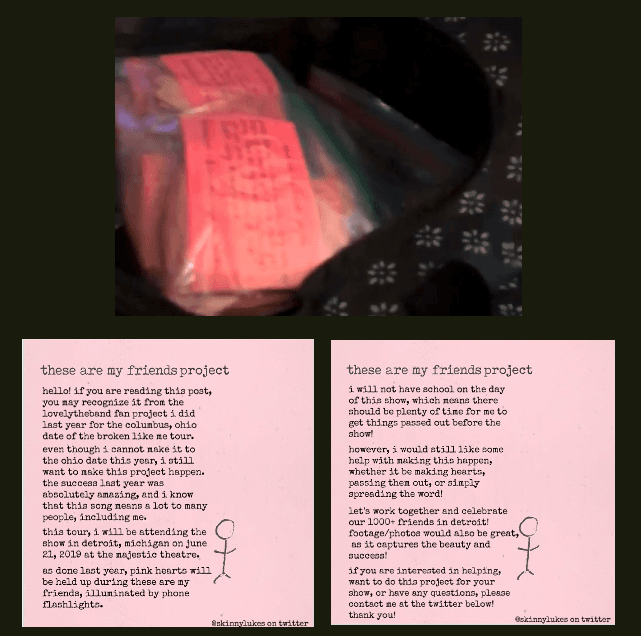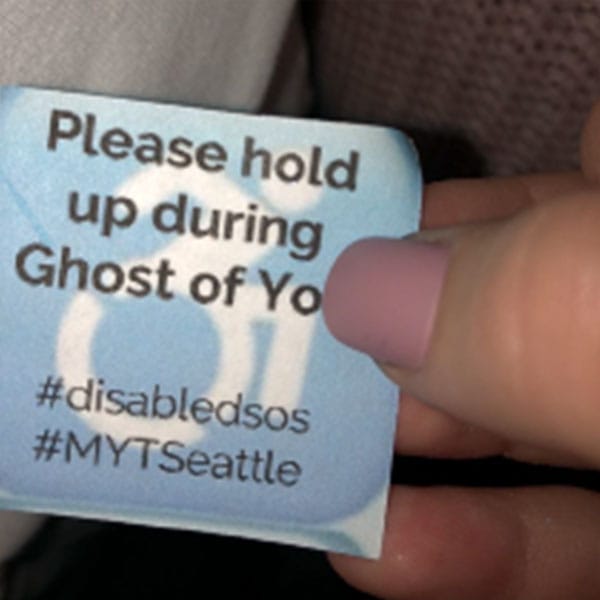Collective Action Through Fan Projects

Carly circa 2020, holding a flag designed and printed by a DisabledSOS volunteer. Carly gave this to 5SOS at a show in 2022 and misses it dearly
By Carly Webster, REVERB Intern | Spring 2024
April 5, 2024
Hi there! I’m Carly, and I’m interning for REVERB this spring! I have had an incredible time collaborating with the team (shoutout to Paige and Livi!) to promote sustainability and activism in live music all over the world! I’ve looked up to the work here for quite some time now, and it really feels full circle!
Long before I knew I wanted to pursue a career (and a bachelor’s degree) in music, I founded Disabled Music Fans Collective. It operated under a different name at the time (DisabledSOS, pronounced “disabled-sauce” – named after the band 5 Seconds of Summer), and I considered it a fan project.
If you’re not familiar with fan culture, you may be wondering what a fan project is. Essentially, it is a collective action organized completely independently of the artist or their management. In fact, fan projects are sometimes created for the artist – perhaps as a thank you for their work.
These activations can come in different forms. I’d say the most common ones are the use of signs (typically made with printer paper) or colored flashlights (made with colored paper or tape).
Fans typically start these actions by designing graphics to spread on social media. They might create a hashtag, account, or specific thread for the project, creating group chats to use for communication leading up to the day of the show. I have sometimes used the search function to find people inquiring about fan projects – sometimes as soon as the tour is announced!

Don’t get me wrong; fans coming together is absolutely beautiful, and that’s part of the reason we at REVERB do this work. But at the same time, we have to consider… is this sustainable? Is this sending the message we want to send? Is creating potential waste for a single moment what our favorite artists would really want?
When you think about it, preparing enough pieces of paper for 10,000+ people is expensive, and you don’t even know if the money will be well spent until the project actually happens! Typically, fans will display the sign or colored flashlight for the duration of a song, and that’s it! I am one to keep any fan project materials, but more often than not, the floor is scattered with them, and that leaves a pretty big mess for venue staff to clean up.

We know fans have a lot of power. For example, in 2020, BTS fans raised $1 million for the Black Lives Matter movement. That is proof that fan actions do not have to be directly connected to the artist and their music, and that even if they aren’t, they can still have an impact.
One worry that fans may have when it comes to organizing is that they do not have the platform or resources to make noise. They may not know where to start. Or maybe they’re just afraid of doing it the wrong way.
I think that’s where organizations like REVERB (as well as our friends at HeadCount, for example) come in. We want to empower fans to speak up about the causes they care about, even if they’re not the most ‘popular.’ We want to facilitate fan-to-fan interactions that may not occur otherwise.
I’m saying this because I know what it’s like to feel alone within the work, like you’re screaming into the void. I’ve learned emotional exhaustion and burnout the hard way. But you don’t have to do it by yourself.

If you’re looking for where to go from here, I highly recommend checking out (and getting involved with) organizations such as Positive Legacy, KultureCity, and Concerted. Your support won’t go unnoticed.
From one fan to another: thank you for being on the right side of music history.